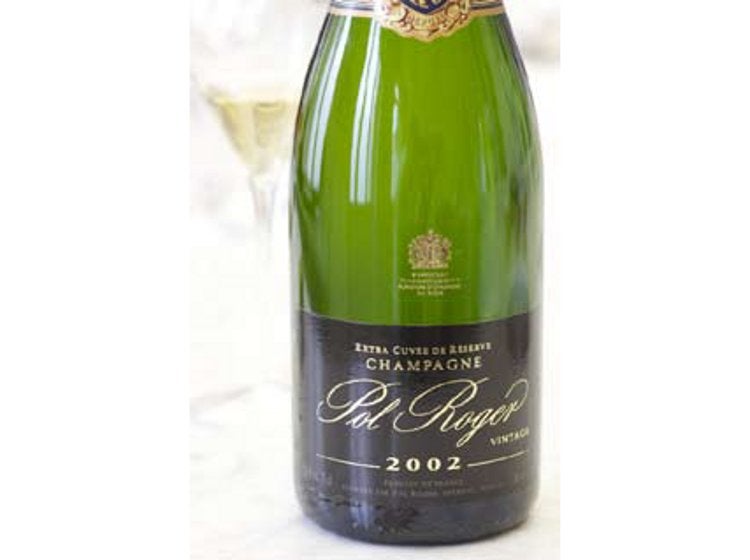
At Pol Roger, they have always taken a particular pride in their Vintages. In the late 1930s, Pol Roger was the number-one Champagne in the United Kingdom; remarkably, the house’s shipments here were almost exclusively Vintage, as war with Germany loomed. After the Munich crisis in May 1938, Major- General Sir Hastings Ismay, secretary of the Imperial Defence Committee, was instructed to create a central war room. His team adapted the basement of the newest and strongest building in Whitehall, on Clive Steps. The war rooms opened on August 27, 1939, a week before war broke out. They were not once hit during the Blitz or the rocket raids of 1944/45.
Sixty-seven years later, the warren of rooms exudes the atmosphere of conflict in the spartan bedrooms of Winston Churchill, a lifelong devotee of Pol Roger, and of his colorful minister of information, Brendan Bracken- Irish adventurer, Tory politician, and the model, it’s said, for George Orwell’s Big Brother in Ninety Eighty-Four. Winston’s dining room is captivating, as simple as a monk’s cell but with the little comforts befitting a great man- whisky decanter, tumbler, wine goblet, and, of course, a large ashtray.
Our evening there was meticulously orchestrated by Berry Bros & Rudd, St James’s venerable wine merchants, who took us on a journey of cumulative sparkling excellence-from the everdelicious Brut Réserve, through five vintages from 1996 up to the star of the night, the recently launched 2002, a year that was to meet all expectations.
What is it that makes Pol Roger so special, as much for wine lovers from Manhattan to Melbourne, as for professional tasters reviewing this most nuanced and subtle of Champagnes?
As with most exceptional things, the answer is quite simple. Great care is taken over the choice of growers and the grapes. Credit for this must go to the much-loved Christian de Billy, the head of the house until his semiretirement in 1999. In the ’50s and ’60s, de Billy had steadily acquired fine but unsung vineyards in the Côte d’Epernay, especially the Cubry Valley in Pierry and in Moussy, home to distinctive Chardonnay and Meunier in a fascinating transitional terrain that lies between the Côte des Blancs and the Marne Valley. With the appointment of the dynamic Burgundian Patrice Noyelle as managing director, a fine parcel of grand cru Avize soon followed.
Just recently, Pol’s landholdings in Champagne increased with a further 3.5ha (8.5 acres) in Cuis, Chavot, and Pierry. These acquisitions, along with key contracts on the Montagne and the Côte, are an insuring necessity as more and more growers now make their own Champagnes. Noyelle’s main legacy is certain to be the restored, state-ofthe- art winery on the Avenue de Champagne in Epernay, “making,” as he says, “selection more precise.” The other central winemaking procedure is the radical débourbage à froid (cold-settling) technique, in which the grape must is chilled down to 43°F (6°C) for 48 hours. This eliminates the coarser lees (harboring oxidative elements) and contributes to the Pol Roger style of freshness, finesse, and long life.
Their Vintage is also as excellent as it is because of the great depth (110ft [33m]) of Pol’s Epernay cellar, where it is aged before shipment.
The Tasting
Pol Roger Réserve Brut (en magnum)
Classic assemblage: 33% Pinot Noir / 34% Chardonnay / 33% Pinot Meunier. Thirty-five still base wines plus reserve wines, from exemplary villages: e.g. Ambonnay, Verzenay, Verzy, (PN); Cuis, Chouilly, Oger (CH); Damery, Pierry (PM). Dosage 10g/l. Aromas of white flowers, crisp apples, touch of brioche, flick of minerals. Lace-like mouthfeel, orchard fruits, lightly honeyed and nutty. Never better. 17.5
Pol Roger 2000
Regular 60:40 blend of Pinot Noir and Chardonnay. A year that has turned out far better than feared; fine warm weather throughout the vintage saved the day. The acidity is moderate (7.6g/l) but ripeness and phenolic maturity are exemplary (10% natural ABV). Perfect for drinking in 20I2: hedonistic, but still with definition and finesse. 17+
Pol Roger 1999 (Magnum)
Challenging vintage needing great care in selection. Topsy-turvy growing season of much warmth and intervening storms. Harvest started well on September 19, but heavy rain in the second half caused some dilution and one of the lowest acidity levels ever (6.3g/l). Vital to pick early, as Pol did; an honorable result in magnums, fresh and fine. 16
Pol Roger 1998
Roller-coaster year with elements of greatness shaped by great heat in August and timely rain in September. Rigorous selection of the grapes was essential. I love this wine: cleansing acidity and explosive fruit in exciting balance; there’s still power in the engine until 2016. 18
Pol Roger 1996
Difficult call. At first, ’96 was globally hailed as an outstanding vintage. As it matures, the experts differ. Some praise its flavor intensity, and unrivaled capacity to age; others, like me, think that for classic balance the acidity is just too high, something it will never lose, in a lot of cases. Pol Vintage, as always, is better than most, though the flavors of sour cherry today suggest a battle is still raging between the acids and the fruit. Best for Pinot Noir, as in the outstanding Cuvée Sir Winston. 17
Pol Roger 2002
No reservations or caveats here. This is the best Pol Vintage I’ve tasted since the magnificent 1982. A wine as great as this is difficult to describe adequately. No single, especially marked characteristic, just every element-fruit, extract, acidity, texture, vinosity-together making a complete whole; the harvest was ideal, warm throughout but not too hot. Still a very youthful Champagne, with 20 years of life ahead; and so much in reserve, thanks to the inspired non-oxidative winemaking. Exquisite. 19.5






